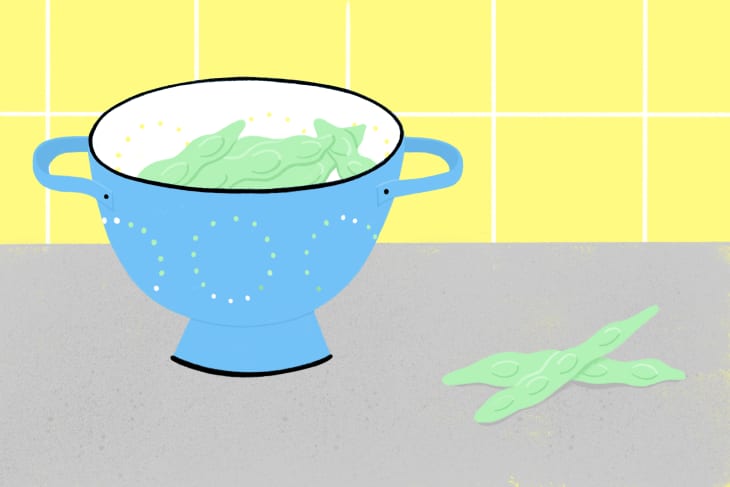The Jump Start You Should Be Giving Your Greens, According to Alex Guarnaschelli
We all know green vegetables are good for you. Sometimes, though, it feels like the preparation process can take forever — especially at the end of a long day. We often skip greens altogether, which means dinners are less nutritious or, more importantly, less delicious.
Chef, restaurateur, and mom Alex Guarnaschelli, author of The Home Cook: Recipes to Know By Heart, is big on greens. At home, they love green beans, broccoli, Brussels sprouts, Swiss chard, and kale. And she knows, from balancing TV work and a family, too, that sometimes it’s hard to get it all together after a long day. Her answer? She blanches green vegetables ahead of time, so they stay extra green and ready for easy dinners.
Not only does blanching stave off the spoiling process (read: things will last longer in your fridge), but it also keeps vegetables bright green and saves time when you start cooking. Perhaps most importantly, blanching can also remove the bitterness that makes some people dislike cruciferous vegetables.
Start with green beans: After a quick blanch, you can serve them cold and crunchy (Alex loves making a quick red wine vinaigrette, using Woodbridge’s cabernet) or hot, simply sautéed in olive oil and showered with lemon and sea salt.
She gives blanched broccoli a quick roast in olive oil and chopped garlic at 350°F — since the broccoli is almost cooked, the garlic doesn’t burn. She also loves topping blanched Brussels sprouts with cheese and baking them into a gratin, which, with her Woodbridge chardonnay, she’d be happy having for dinner.
How to Blanch Vegetables
Blanching is just a process of cooking vegetables partway in boiling water, then icing them down, which removes bitterness and keeps them extra green and beautiful. (It’s also great practice before freezing vegetables, since it removes organisms that can cause deterioration during storage.)
To blanch vegetables, bring a big pot of salted water to a boil. (Alex says the water should taste like the sea.) Add the vegetables and cook them for a few minutes — long enough for them to turn bright green, but not long enough to cook them through. Transfer them into an ice bath, made of ice cubes covered with cold water, which stops the cooking process and keeps them bright, bright green.
If you’d like to use the vegetables right away, simply drain them and sauté them for a couple of minutes on the stove in butter, oil, or stock. Alternatively, you can drain them and store them, refrigerated and covered, for a few days. When you’re ready to eat them, they’ll cook much more quickly, or you can serve them as a cold salad and they’ll still be bright green — an easy, appealing alternative to sad-looking leftover vegetables.
Even if you don’t believe in miracles, you probably believe in tiny miracles. They’re the little things that, against all odds, happen and make a huge difference in our lives. A tiny miracle can be a recipe that gets dinner on the table during the most hectic weekday, the little hack that finally organizes your fridge, a newfound motto that helps you stay on top of kitchen messes, or anything else that seems like a gift from above. To help us all start the new year off right, we asked some influential bloggers and cooks to share their biggest tiny miracles.
Note: Alex Guarnaschelli has a partnership with Woodbridge wine, but this post is not sponsored by Woodbridge.
